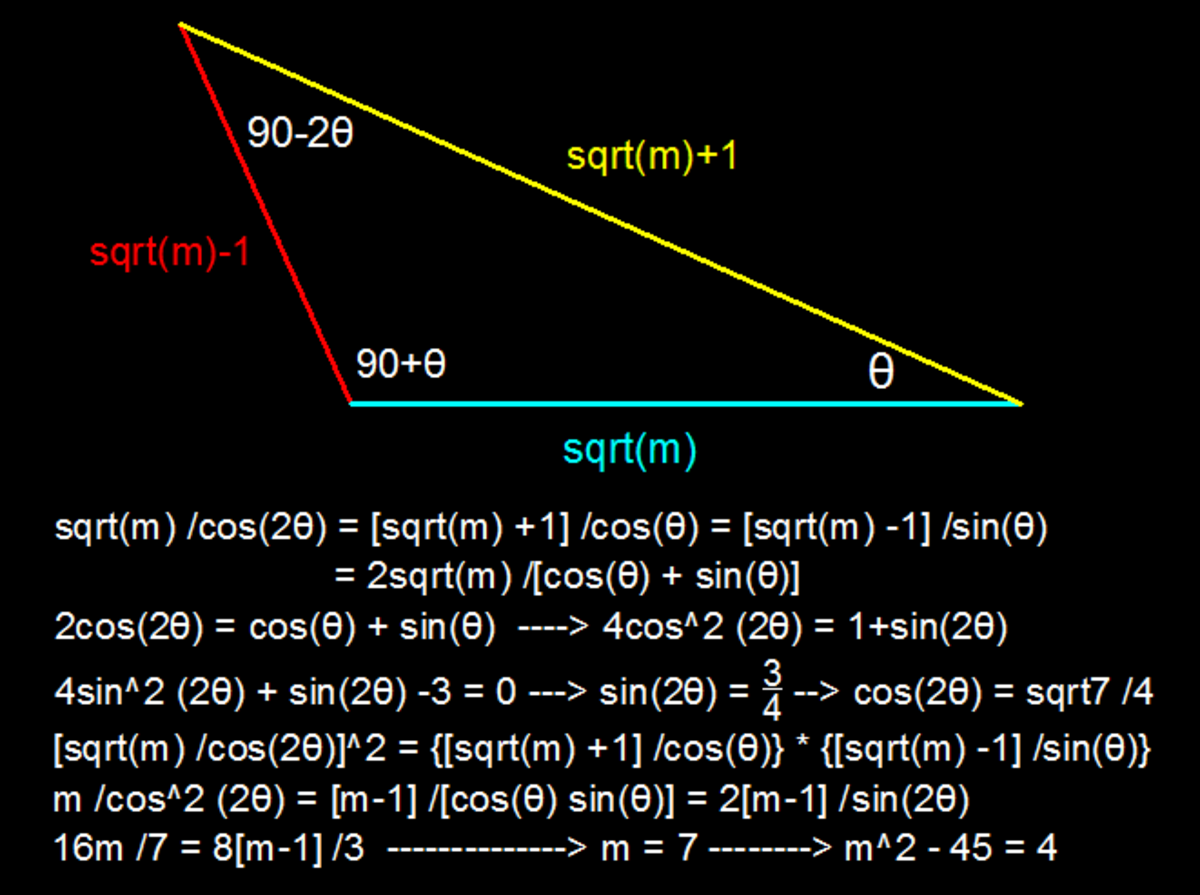A geometry problem by A Former Brilliant Member
The sides of a triangle are in an arithmetic progression , and the greatest angle exceeds the least angle by 90 degrees.
If the sides of this triangle are in the ratio of , find the value of .
The answer is 4.
This section requires Javascript.
You are seeing this because something didn't load right. We suggest you, (a) try
refreshing the page, (b) enabling javascript if it is disabled on your browser and,
finally, (c)
loading the
non-javascript version of this page
. We're sorry about the hassle.

If a , b , c where a > b > c ⟹ a + c = 2 b
s i n ( 9 0 + x ) a = s i n ( 9 0 − 2 x ) b = s i n x c = 2 R
⟹ a = 2 R c o s x , b = 2 R c o s 2 x , c = 2 R s i n x
Using a + c = 2 b , c o s x + s i n x = 2 c o s 2 x = 2 ( c o s x − s i n x ) ( c o s x + s i n x )
As ( 9 0 − 2 x ) > 0 , c o s 2 x > 0
and also c o s x , s i n x > 0 ⟹ c o s x + s i n x > 0
Cancelling c o s x + s i n x , we get c o s x − s i n x = 2 1
Squaring we get, 1 − s i n 2 x = 4 1 ⟺ s i n 2 x = ?
⟹ c o s 2 x = + 1 − s i n 2 2 x = 4 7
c o s 2 x = 2 1 + c o s 2 x = 8 4 + 7 = ( 4 7 + 1 ) 2
Find s i n 2 x and use c o s x , s i n x > 0 .
After this we get our required ratios as 7 + 1 : 7 : 7 − 1 .